Application of Time-Temperature Indicators and Time Temperature Data Loggers in the Seafood Industry
ID
FST-345NP
Time and temperature abuse occurs when seafood is held at uncontrolled temperatures that allow bacteria to grow. These bacteria can include pathogens and food spoilage bacteria that reduce product shelf-life and quality. Temperature fluctuations can happen at any point in the cold chain: during harvesting, processing, distribution or retailing. Temperature measurements are essential to assure seafood quality and safety, maintain business-to-business accountability, comply with regulations, and follow Hazard Analysis and Critical Control Point (HACCP) plans. Controlling humidity in conjunction with temperature is also important for live seafood products’ survival.
This extension report will discuss the use of temperature sensors for deployment in seafood products. We will describe two types of temperature sensors—time-temperature indicators (TTIs) and time temperature data loggers—and the benefits and limitations of each. Finally, we will discuss how the seafood industry can incorporate TTIs and temperature data loggers into food safety, food quality and QA/QC programs.
TTIs versus temperature data loggers: What’s the difference?
TTIs are devices or smart labels that visually show when the thermal history of a seafood product has reached a specific level of time-temperature exposure. The readout is typically a non-reversible visual change such as a color change.
There are two types of TTIs on the market. There are TTIs that only measure temperature and not time, and TTIs that measure time/temperature exposure for specific bacteria, pathogens, or toxin producing bacteria.
Benefits: low cost; easy to operate; easy to read and interpret data
Limitations: low sensitivity; often not reusable; difficult to identify the exact point in time that temperature abuse occurred; have specific shelf lives and must be stored refrigerated or frozen depending on time until use; must confirm the device has been activated change.

Time temperature data loggers are equipment that digitally measure or continuously monitor and record the temperature of seafood during harvest, processing, cooking, storage, and transit.
Benefits: high sensitivity; wide temperature ranges; reusable; programmable to record specific time parameters, temperature, and alarm settings; can be either portable or fixed; can link to a printer, computer or smartphone to log and visualize data
Limitations: Battery operated but most have long battery life or backup to prevent data loss; loggers may be fragile; may be hard to calibrate.
How to use TTIs?
How to install, operate and read data from a TTI?
A TTI packet is attached to an individual seafood package or pallet. The indicator packet contains chemicals that mix, when crushed, combines a predetermined amount of chemicals starting the TTI’s thermal exposure monitoring.
The TTI is read by looking at the packet on the seafood package or pallet at the point of receiving to determine if a visual color change occurred. The manufacturer’s guidelines will then provide information as to what a change or no change in color means regarding heat exposure and seafood safety.
Situations where a TTI is useful:
Provide a quick way of determining whether a seafood product reached a critical environmental temperature;
Give receivers of refrigerated fresh and pasteurized seafood a visual check to determine if the product happened to be held out of refrigerated control for a short time frame remains safe to eat or must be discarded;
May accompany molluscan shellfish in the cold chain from harvest to retail and allow chefs to quickly determine if shellfish remained under proper refrigerated control to safely serve customers.
How to use time temperature data loggers?
How to install, operate and read data from temperature data loggers.
Temperature data loggers collect quantitative time-series data about temperature variability in seafood processing and supply chains. They are activated via hardware or blue tooth interface to a computer or smartphone with manufacturers’ software. Sampling intervals, start times, and time-temperature alarms can be manually adjusted using the software. Temperature data loggers are installed by inserting in, or attaching to, products or packaging.
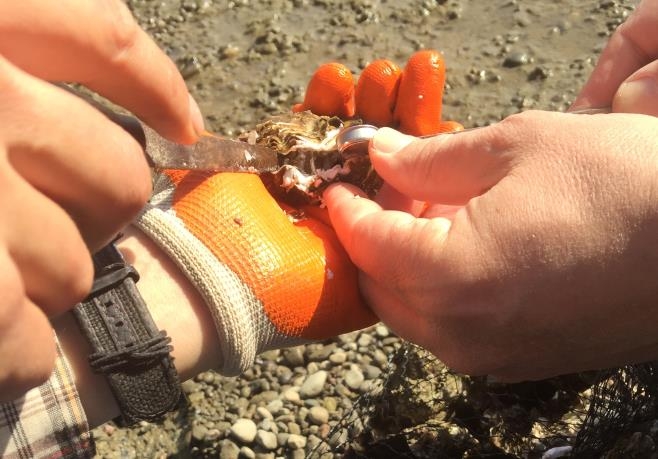
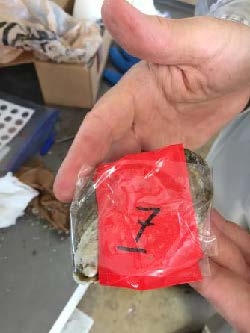
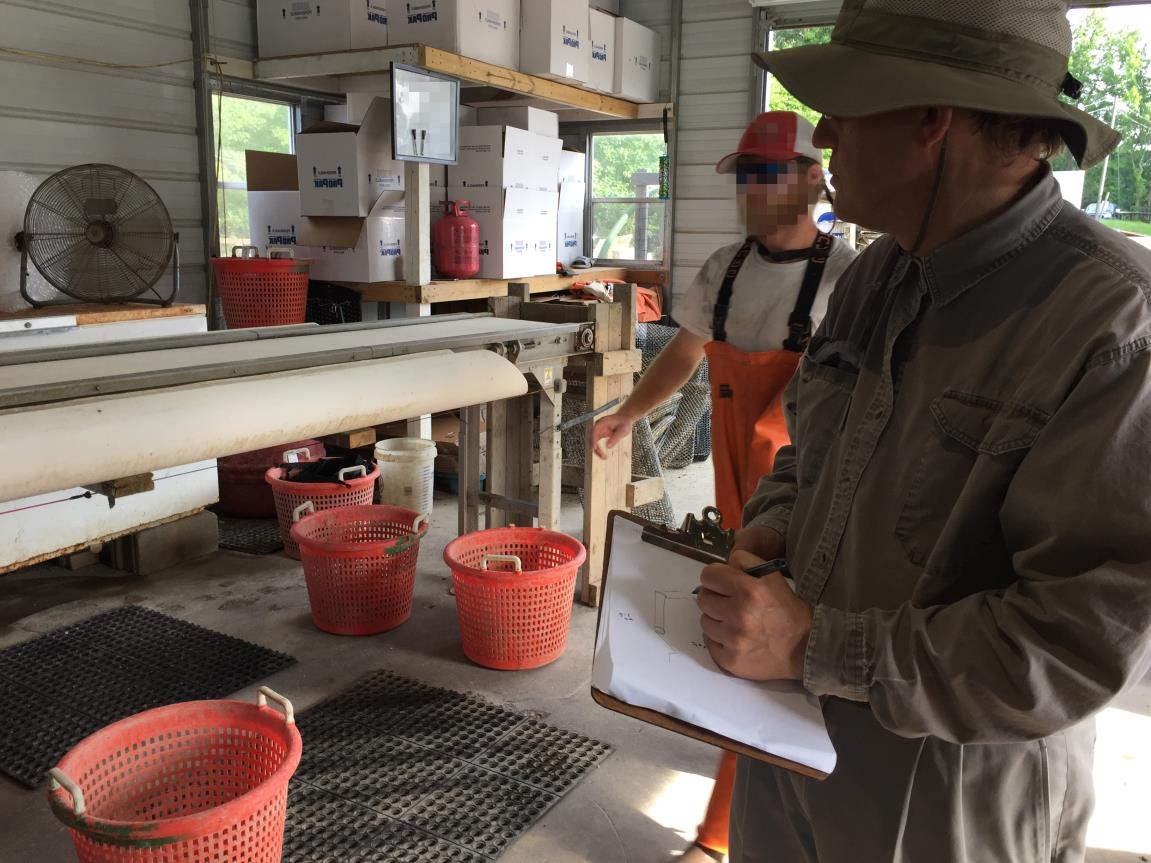
In our study (Love et al. 2018, 2019), we used ACR Smart Button data loggers because their small size fit inside an oyster and their capability to track time and temperature during harvest, post-harvest processing, and distribution. We also attached a logger to the outside of the shipping container to similarly track ambient temperatures. After retrieving the loggers, data were downloaded and visualized using the manufacturer’s software or imported into Microsoft Excel.
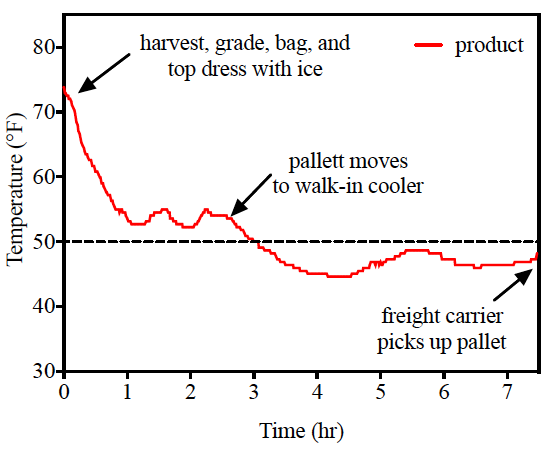
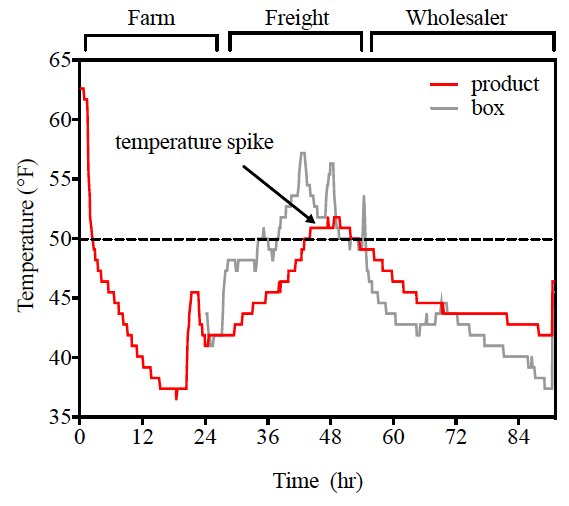
Figure 4a shows internal oyster temperatures during on-farm processing and Figure 4b shows the ambient and internal oyster temperatures recorded during freight shipment from an oyster farm to a wholesaler. The benefit of a temperature data logger over a TTI in this situation is its ability to identify the exact point in time where the product exceeds a specific temperature, and how long the product deviates from appropriate temperature control, so preventative measures can be taken to avoid temperature abuse in future shipments.
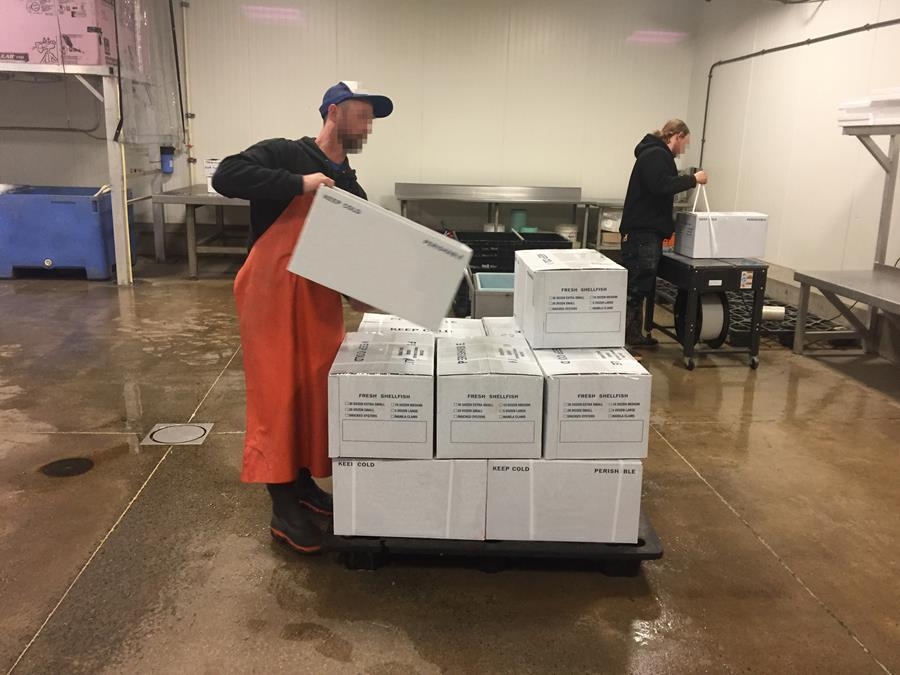
Situations where a time temperature data logger is useful:
Monitor time and temperature of expensive shipments;
Evaluate new processes, methods, packaging as part of QA/QC;
Problem solve difficult time and temperature situations where more sensitive analytical equipment and time-series data are required;
Verify that HACCP plans are working appropriately;
Verify that food safety regulations are being met.
| Product (Manufacturer) | Notes | Website |
|---|---|---|
| TTIs | ||
| L5-8 (Vitsab International) | Color change and smartphone app | vitsab.com |
| Seafood 37°F (3°C) non- reversible TTI (Time Strip) | Color change and smartphone app | timestrip.com |
| Temperature Data Loggers | ||
| Smart Button (ACR Systems Inc.) | mall size, reusable, loggers measuring temperature and time | www.acrsystems.com |
| Temp Tale 4 (SensiTech) | Pre-programed time and temperature limits, downloadable data, alarm settings | www.sensitech.com |
| TT Sensor Plus, TT Sensor Plus 2 (Avery Dennison) | One time use downloadable to a computer or smartphone | label.averydennison.com |
| Emerson “Go loggers” | GO loggers are data loggers or loggers with pre-programmed temperature ranges and visual temperature breach alerts. | https://climate.emerson.com/en-us/products/controls-monitoring-systems/cargo-tracking-monitoring/loggers |
Conclusions
Time temperature data loggers and TTIs can help the seafood industry protect against risks, save businesses money, and maintain the integrity, quality, and safety of products. There are important differences between temperature data loggers and TTIs, and certain situations may warrant the application of different technology. Talking with seafood extension staff, consultants, or other experts may be helpful before developing a testing program for time and temperature assessment. Staff training and capacity building are also important when introducing any new technology, as well as clear guidelines around communicating time-temperature findings within a company and among supply chain partners.
Additional Resources
Love, D. C., Lane, R. M., Davis, B. J., Clancy, K., Fry, J. P., Harding, J., & Hudson, B. (2018). Performance of Cold Chains for Chesapeake Bay Farmed Oysters and Modeled Growth of Vibrio parahaemolyticus. Journal of Food Protection, 82(1), 168-178.
Love, D. C., Kuehl, L., Lane, R. M., Fry, J. P., Harding, J., Davis, B. J., Clancy, K., & Hudson, B. (2019). Performance of Cold Chains and Modeled Growth of Vibrio parahaemolyticus for Farmed Oysters Distributed in the United States and Internationally. International Journal of Food Microbiology. (In review)
Villalba, A., Lane, R., Liu, C. 2018. Types of Thermometers Used in the Seafood Industry. Virginia Cooperative Extension. Virginia Tech. Publication FST-295P
Wang, S., Liu, X., Yang, M., Zhang, Y., Xiang, K., & Tang, R. (2015). Review of time temperature indicators as quality monitors in food packaging. Packaging Technology and Science, 28(10), 839-867.
FDA Website: Fish and Fishery Products Hazards and Controls Guidance 4th edition; Time Temperature Indicators
https://www.youtube.com/watch?v=9KLEIfsFQFI Accessed 5/03/2019
Disclaimer
Commercial products are named and/or shown in this publication for informational purposes only. Virginia Cooperative Extension does not endorse these products and does not intend discrimination against other products that could also be suitable.
Virginia Cooperative Extension materials are available for public use, reprint, or citation without further permission, provided the use includes credit to the author and to Virginia Cooperative Extension, Virginia Tech, and Virginia State University.
Virginia Cooperative Extension is a partnership of Virginia Tech, Virginia State University, the U.S. Department of Agriculture, and local governments. Its programs and employment are open to all, regardless of age, color, disability, sex (including pregnancy), gender, gender identity, gender expression, genetic information, ethnicity or national origin, political affiliation, race, religion, sexual orientation, or military status, or any other basis protected by law.
Publication Date
September 5, 2019



